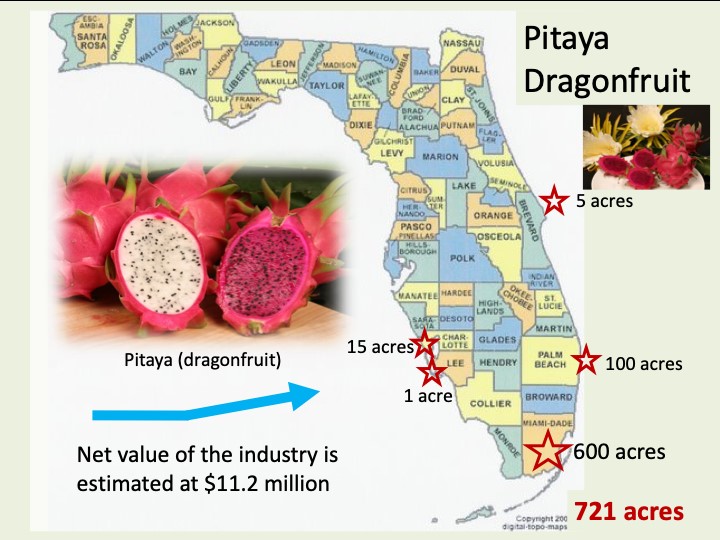
HOMESTEAD, Fla. – Scientists at the University of Florida’s Institute of Food and Agricultural Sciences are providing valuable insect management information to farmers interested in producing dragon fruit. The fact sheet Pitaya (Dragon Fruit) (Hylocereus undatus) Pests and Beneficial Insects provides insight on insects and pests that can limit production by this vine-like cactus.
As is the case for any other crop in Florida, dragon fruit is vulnerable to insect attacks.
“The goal is to provide growers with a description of all pests and beneficial insects associated with dragon fruit in south Florida, together with some general control recommendations,” said Daniel Carrillo, an assistant professor of entomology and nematology at UF/IFAS Tropical Research and Education Center in Homestead.
Carrillo, who co-authored the fact sheet with biologist Rita Duncan, works with a team of scientists at the research center monitoring pests impacting the crop.
“Pitaya, or dragon fruit, is an emerging crop in South Florida,” he added. “Acreage of this fruit crop in Florida has increased rapidly and shows a good potential for commercialization. But as with most fruit plants, pests can be a problem.
Potential pests for the dragon fruit in South Florida are leaf-footed bugs, aphids, beetles, mealybugs and scales. The most dangerous are thrips.
“Thrips can be very detrimental,” said Carrillo. The unsightly damage has rendered 20% to 80% of the fruit unmarketable during years with high populations – a devastating result for the grower.”
What is Dragon Fruit?
Dragon fruit, which bears other common names such as strawberry pear and night-blooming cereusis, is a group of vine-like, climbing cacti perennial originating from Mexico and Central and South America. It was introduced and cultivated in Vietnam more than 120 years ago. Between the 1990s and 2000s, dragon fruit was introduced into other Asian countries, the Middle East, Australia, and the United States as an exotic fruit crop. In Florida, production of dragon fruit has steadily increased since the 2000s. This crop that growers can harvest in less than two years produces fruit with high-nutrient values and low calories and is enjoying increasing demand in the market.
According to Jonathan Crane, a tropical fruit crop specialist at the Homestead research center, dragon fruit is grown on about 721 acres in five Florida counties. These include Palm Beach, Charlotte, Brevard, Lee and Miami-Dade.
Story courtesy of UF/IFAS website.









